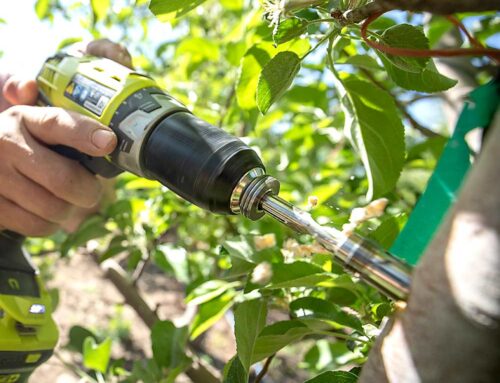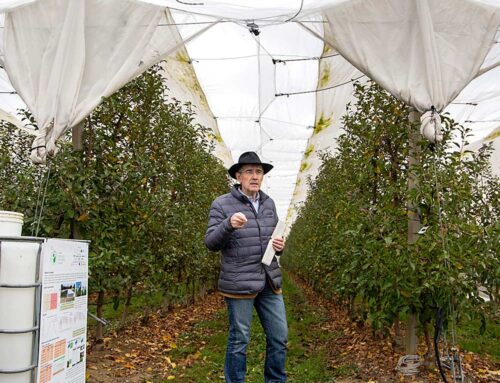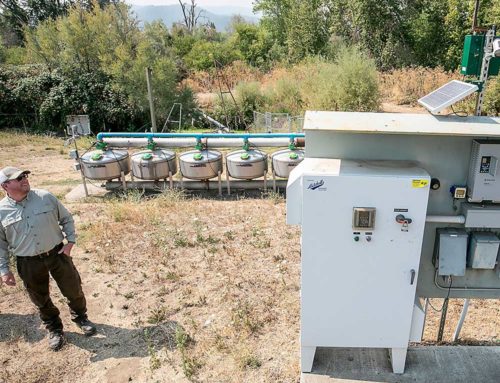Fruit is basically made up of water and sugar.
It takes an estimated 300 pounds of water to produce one pound of fruit.
Dr. Dana Faubion, Washington State University (WSU) Cooperative Extension agent in Yakima, explained that the tree uses water, along with light energy from the sun and carbon dioxide from the atmosphere (which is absorbed through the leaf stomates) to make sugars.
The process is called photosynthesis. Morning light prompts the tree to open its stomates so that carbon dioxide can enter. There are about 50,000 stomates on the underside of a peach leaf and three times that number on an apple leaf.
The optimum temperature for photosynthesis is 80°F. Little water is needed for photosynthesis. About 98 to 99 percent of the water a tree uses is used for transpiration to cool itself. During the heat of the day, the plant can lose so much water through the stomates that it reaches a water deficit. The stomates close, which stops the entry of carbon dioxide, so photosynthesis also stops.
This means that heat stress or a lack of irrigation reduces the rate of photosynthesis and production of sugars.
Faubion said.a number of practices can help keep the trees functioning during water shortages.
Cover crop: Trees in an orchard without cover crop use about 28 inches of water in a season, compared with 36 inches where there is a cover crop. Faubion said.good cover crop and weed management is essential, extending at least three feet out from the tree to avoid competition with tree roots.
Mulch: Mulching can help reduce water loss from the soil, but the cost of hauling it to the orchard may be prohibitive. An alternative is to blow grass clippings under the trees when mowing.
Thinning: Heavy thinning can help the tree survive a drought year and enhance return bloom, Faubion said. A heavy crop is a lot of load for the tree to handle.
Pruning: Research by Dr. Ed Proebsting, former horticulturist with WSU at Prosser, showed that dehorning (severe pruning of scaffold branches) can help save trees during a drought. A drawback was that it was difficult to bring dehorned trees back into quality fruit production. Dehorning might not be effective on dwarfed trees that don’t have much canopy to begin with.
Growth regulator: Faubion said.the growth regulator Apogee (prohexadione calcium) can reduce vegetative growth, but probably wouldn’t reduce water use significantly and would be expensive.
Particle film: Particle films can reduce the incidence of fruit sunburn by 50 percent, but Faubion thought it would not significantly reduce a tree’s water stress.
Antitranspirants: Faubion didn’t think antitranspirants would be useful for reducing the amount of water a tree uses.






Leave A Comment